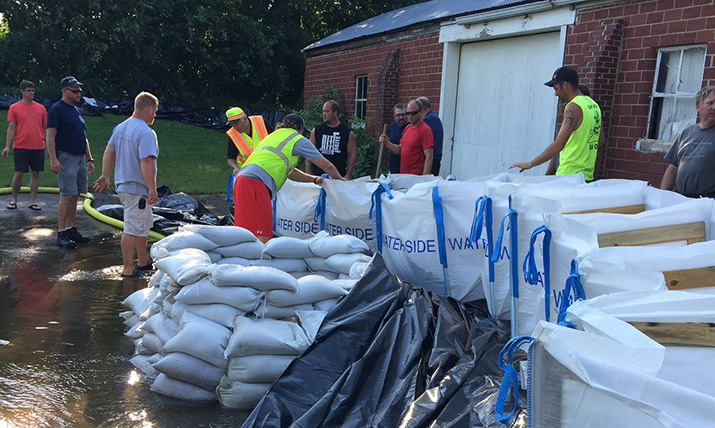We’ll get by with a little help from our friends
July 23, 2018

Water is a funny thing. We can’t live without it, but right now, it’s getting increasingly hard to live with it in many parts of Minnesota. This summer’s storms have brought damaging winds, tornadoes and rain. Lots and lots of rain. So much, in fact, that dozens of counties, along with several tribal nations, are reporting significant impacts.
What’s a state to do in such a situation? Ask for help. Representatives from the Federal Emergency Management Agency (FEMA) recently arrived to conduct preliminary damage assessments (PDAs) along with state and local officials. What they discover will determine whether the state can request a federal major disaster declaration.
If a federal disaster is declared, qualifying local governments can ask for reimbursement of money they spend on response and cleanup, such as removing debris from roads; emergency protective measures, such as removing downed branches from power lines; and damages to public property, such as roads and bridges, water control facilities, buildings and equipment, utilities and parks. The federal government covers 75 percent of these reimbursements, while the state, through our Homeland Security and Emergency Management (HSEM) division, picks up the other 25 percent.
The federal disaster declaration process is several steps long, which means we may not know the full monetary extent of the damages until the PDAs are complete. Here is a summary of how that process works (for a more detailed look, check out our Preliminary Damage Assessment Process (PDF):
Shortly after the incident, local officials tell HSEM what facilities in their communities are affected.
HSEM asks FEMA to conduct a PDA. They view the damage in person together with teams from the affected county to find out whether the damage meets the threshold of $3.68 per person.
If it does, and the state meets its threshold of $7.7 million, HSEM drafts a letter on behalf of the governor requesting a disaster declaration. This includes information such as National Weather Service data and the steps local officials took to respond to the emergency.
The governor submits the letter to the president through FEMA. If the president declares a federal disaster, HSEM and FEMA work together to apply for funds.
There are two things you can do if you have damages to your home or business. First, report your damages to your county emergency manager (here’s how to find that person). They’ll submit the data to HSEM. Second, contact the Minnesota Voluntary Organizations Active in Disaster (MNVOAD), which has plenty of volunteer agencies stepping in to assist residents who have been affected by the flooding.
By working together on local, county, state and federal levels, we can rediscover the benevolent side of water and recover from disaster.

